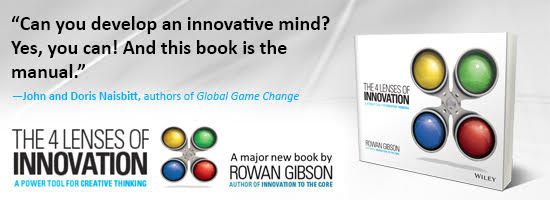How the Innovation in the IoT Will Boost Our Economy
When people think about the Internet of Things (IoT) in relation to the economy, they generally fall into one of two camps. One side of things looks the IoT and sees money, to the tune of $11.1 trillion annually, if you look at McKinsey’s evaluation. Others focus on more dire aspects. Ars Technica reports that advances like the IoT could cost humans 5.1 million jobs by 2020, and if you read the comments sections of article like The Guardian’s “Will automation and the internet of things lead to mass unemployment?†you see that the fear is widespread.
Nobody knows who is right, but if history is any indicator, the naysayers of the future will be compared to the Luddites of the past.
It all starts with automobiles

Connected cars will sync, providing maximum fuel efficiency and time.
If you’re like me, you’re sick of hearing about the IoT and automation are dooming drivers to unemployment. I’m sympathetic, don’t get me wrong–but I’m also not one who thinks we should halt progress. If the Luddites would’ve had their way, we’d probably still be sewing clothing by hand instead of turning to manufacturing. Nevertheless, self-driving cars and trucks are already lining up to displace human drivers. At the end of October this year, the first-ever commercial shipment by a self-driving truck unfolded between Fort Collins and Colorado Springs. This will save companies money, and though it may cost some drivers (taxis, Uber, other transportation) their jobs, it will inevitably create more than it displaces.
This is because, in a future is full of automated, internet-regulated vehicles, there will be a ton of software to write. On top of that, the amount of money that IoT cars could save the economy–as well the green environmental impact it will make–means that those jobless will be able to find work elsewhere. When IoT cars communicate with each other and with sensors in cities and highways, they’ll automatically program and follow the fastest, most efficient routes, meaning an end to traffic jams, which cost Americans $124 billion a year.
The IoT will make manufacturing more efficient
Speaking of automobiles, when you think about how many vehicles alone are recalled annually, you see how expensive manufacturing mistakes can actually be. In 2011 alone, over 15 million vehicles were recalled nationwide. Four years later, that number more than tripled, setting records at 51 million vehicles recalled, according to the NHTSA. The IoT and its sensors promise to make manufacturing smarter, stifling these recalls before they even happen.
Beyond traditional supply chain, manufacturers can use data to inform the life of their products. Nick Ismail, writing for Information-Age.com, mentions airline manufacturers who could install engines with sensors, and then consistently monitor and service that engine based on its readouts. In the world of cars, this could be translated to sensors that pinpoint performance issues, allowing the manufacturer to inform the supplier of these issues, and also for the supplier to use that data to inform R&D. Suppliers can then design safer products with fewer flaws.
Cryptocurrency is good for the world, bad for regulators
If there’s anything that bitcoin has taught us, it’s that there’s a viable alternative to the centrally managed system. Forbes describes it thus:
“Bitcoin is a disruptive technology that has the potential to transform the global financial services industry and raise the standard of living for all. Through decentralized cryptography, Bitcoin eliminates the need for banking intermediaries, significantly lowering transaction costs and could liberate poverty stricken economies around the globe by providing access to capital to the one-third of humanity that is excluded from the financial world.â€
One-third of humanity is a big number, and if, all of a sudden that population had buying power, we’d see massive changes and innovations in the global economy–and it really doesn’t take much. Most small businesses start with $10,000 or less, and bitcoin could provide those previously disenfranchised with a way to pay back loans for startup costs.
Unfortunately, the current, centralized system is confused as to how to handle this new world of cryptocurrency. The IRS considers bitcoin property, while the U.S. Treasury Financial Crimes Enforcement Network (FinCEN) sees it as currency. No matter–bitcoin itself, while potentially extremely powerful, is actually just the tip of the iceberg.
Other blockchain applications

Yeah, Bitcoin is nice–but that blockchain tho..
The technology behind the bitcoin? Now that’s another story completely. The blockchain is essentially a public ledger of all Bitcoin transactions that have ever been executed–but because it’s a publicly verified ledger, that means that there’s no way to fake transactions or to counterfeit bitcoins because the block won’t accept them. What this basically means is that blockchain technology can eliminate “issues of trust,†essentially electronically verifying things in moments that it used to take clearinghouses days to do.
The way that the Wall Street Journal describes it likens the rise of the blockchain to “cutting out the middleman.†Smart contracts don’t need to be verified by a third party, which can speed up things like shipping. In fact, the Commonwealth Bank of Australia and Wells Fargo & Co. made the world’s first cross-border transaction using blockchain technology to deliver bales of cotton from China to the U.S. The future, it would seem, is already here.
At the end of the day, when you look at the IoT, nothing is perfect. There are still cyber criminals out there looking to capitalize on weak points in the IoT’s infrastructure, and the day when the road is filled with driverless cars is still a long way away. One thing is for certain though, once we work out the kinks, nobody is going to be sad that day came.
Wait! Before you go…
Choose how you want the latest innovation content delivered to you:
- Daily — RSS Feed — Email — Twitter — Facebook — Linkedin Today
- Weekly — Email Newsletter — Free Magazine — Linkedin Group
 Andrew Heikkila, a tech enthusiast and writer from Boise, Idaho, and a frequent contributor to Innovation Excellence. He also writes for Tech Crunch. You can follow him @AndyO_TheHammer
Andrew Heikkila, a tech enthusiast and writer from Boise, Idaho, and a frequent contributor to Innovation Excellence. He also writes for Tech Crunch. You can follow him @AndyO_TheHammer
NEVER MISS ANOTHER NEWSLETTER!
LATEST BLOGS
Changing Relationship Between Electric Vehicles and Power Grid
Recently Ford announced an electric truck for the masses, the Ford F-150 Lightning, with up to 300 miles of range…
Read MoreFour Traits Your Next CEO Must Have For Your Organization to Thrive
CEOs come and CEOs go. Some – like Steve Jobs at Apple, Jeff Bezos at Amazon, and Richard Branson at…
Read More



